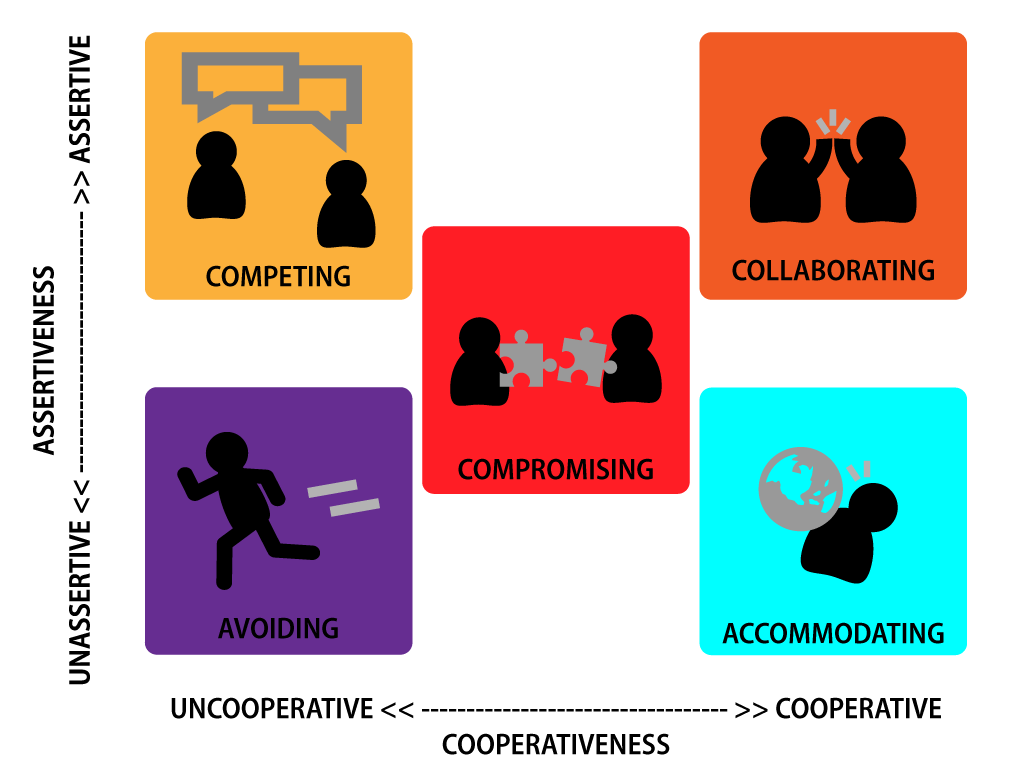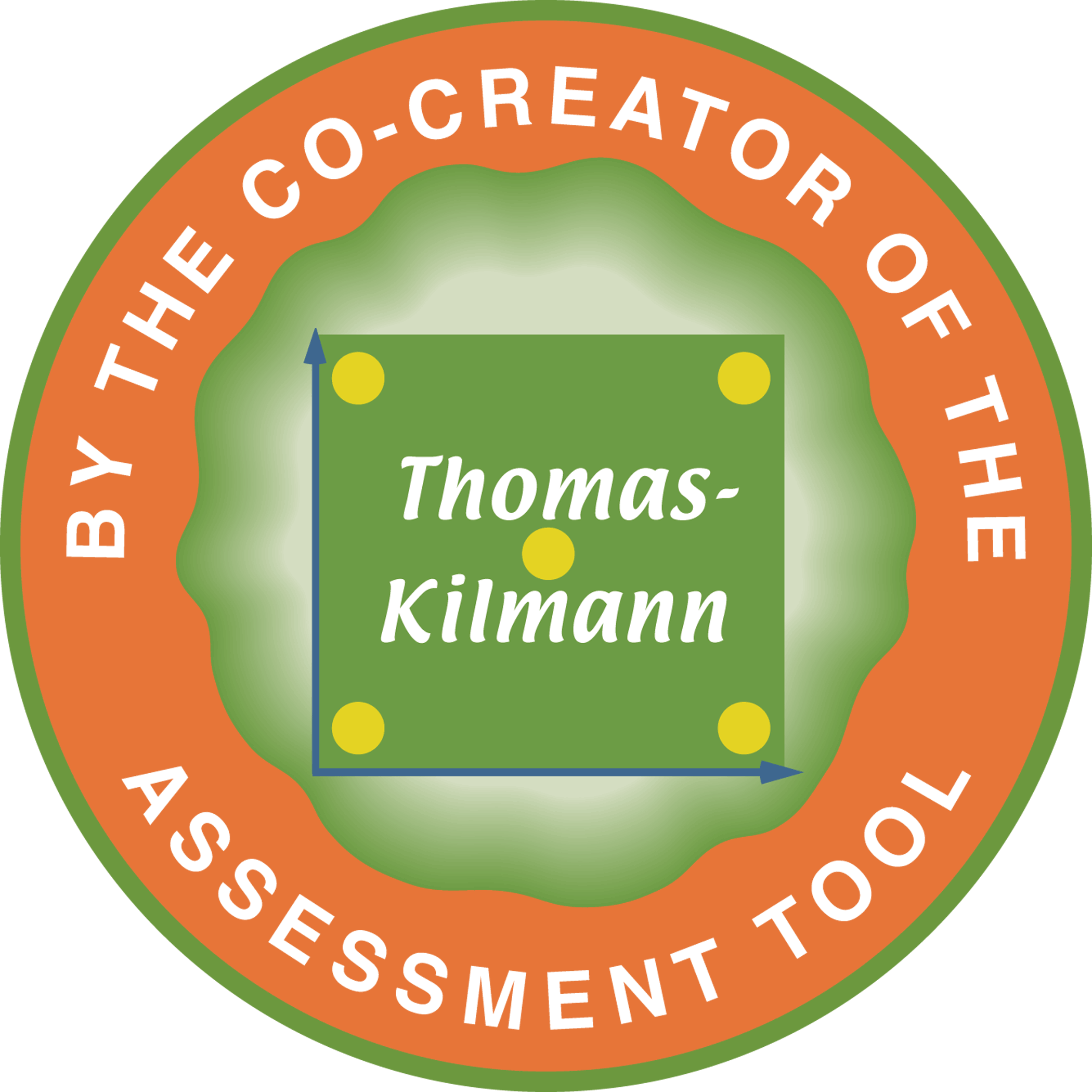14 Jul Which Conflict Mode Is Used Most Frequently?
Ralph H. Kilmann, co-author of the Thomas-Kilmann Instrument (TKI)
That question comes up from time to time, especially during group training and classroom discussions. Here is my response (which may or may not surprise you):
Technically speaking, the TKI cannot answer this question, even though people often try to extract inferences from various statistical tables (incorrectly). The fact is that the TKI does not measure absolute frequencies that can then be summed or averaged in any meaningful way across individuals.
The TKI consists of 30 A/B choices of one conflict mode relative to another mode, so a person is asked to choose the competing mode vs. the avoiding mode, the collaborating mode vs. the compromising mode, and so forth, across the 30 A/B items on the TKI. As a result, each person’s raw score for one mode is always relative to his choices for the other four modes. That’s why every person’s total sum of raw scores always equals 30. One person can face a lot of conflict every day, while another person faces far fewer conflict situations. But both of their TKI scores would still add to 30!

Thus, the TKI does NOT measure the absolute frequency of using a given mode ACROSS THE INDIVIDUALS IN A GROUP OR AN ENTIRE COUNTRY, only the relative frequency (per person) ACROSS THE FIVE CONFLICT MODES. So if Person A gets a raw score of 10 for competing, it’s only because he uses that mode more than the other modes (all of which he might not be using very often). But Person B might get a raw score of 8 for competing, but be actually uses that mode much more frequently (in an absolute sense) than Person A, because Person B faces many more conflict situations. Essentially, comparing one person’s raw score on a mode to another person’s raw score is comparing apples to oranges.
The 30 A/B “forced-choice” items on the TKI assessment result in five raw scores for each person, which can then transformed into normative percentiles (from 0% to 100%). Based on these percentiles, we can suggest whether a person might be using a conflict mode too much or too little—as compared to a large normative sample. Without using percentiles, we really couldn’t interpret what a person’s raw scores mean and we wouldn’t be able to suggest how a person might improve his or her conflict-handling behavior—by using some habitual modes less often and other dormant modes more than before (but the total raw scores across all five modes on a second TKI administration will still add to 30, regardless if the person has changed his “response profile” to conflict situations).

Always keep this in mind: For the population as a whole, 25% of the people will score in the high category on the collaborating mode, 25% will score in the low category, and 50% will score in the middle. That’s how normative percentiles work for each of the five conflict modes. So if you ask how many people in the U.S. score high on competing, the answer is 25%, by design.
Bottom line: It doesn’t make sense to try to say that one mode is used more frequently than the other modes across the board (as if it’s the Number 1 used mode), while another mode is Number 2, etc., since every person’s response is relative to the other four modes.
Determining the absolute use of each mode (the actual frequency) is a very different question than determining the relative frequency. Another conflict instrument can be designed to use an absolute frequency scale by asking how often each mode is used (once a week, five times a week, ten times a week, etc.). But the TKI is based on a forced-choice scale: When you find your wishes differing from those of another person, would you typically use the collaborating mode OR the accommodating mode, and so on for 30 such questions—regardless of how many conflict situations you regularly encounter.
Kilmann Diagnostics offers a series of eleven recorded online courses and nine assessment tools on the four timeless topics: conflict management, change management, consciousness, and transformation. By taking these courses and passing the Final Exams, you can earn your Certification in Conflict and Change Management with the Thomas-Kilmann Instrument (TKI). For the most up-to-date and comprehensive discussion of Dr. Kilmann’s theories and methods, see his 2021 Legacy Book: Creating a Quantum Organization: The Whys & Hows of Implementing Eight Tracks for Long-term success.





